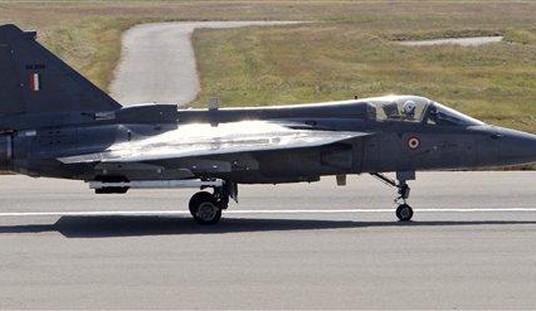In the very heart of downtown Los Angeles, in the shadow of City Hall, a new office building is nearing completion at the corner of First and Spring Streets. With its modern, steel-and-glass design, the new building stands in sharp contrast to its venerable neighbor just across Spring Street, a 1930s Art Deco masterpiece designed by Gordon Kaufmann, architect of the Hoover Dam.
As different as the buildings are in their architectural styles, the greater distinction lies in the organizations these two structures represent. Sometime early next year, the modern building will become the new headquarters for the Los Angeles Police Department, which will move from the boxy, ‘50s-era Parker Center so familiar to viewers of the Dragnet television series. And when the cops have at last moved into their new offices, they’ll be able to look across Spring Street and see their neighbors in the Art Deco landmark doing in reality what they’ve seen them doing figuratively for years: looking down their noses at them.
The Art Deco landmark, you see, houses the writers and editors of the Los Angeles Times. Moving the cops into close quarters with all those ink-stained wretches at the Times is rather like the Capulets moving in across the street from the Montagues, such is the antipathy we cops have for the scribes at the paper and they for us. Which is not to say there will soon be swordplay in the middle of Spring Street (although that does conjure up an interesting visual), but it could make for some interesting encounters on the sidewalks and in the taverns nearby.
I should point out that this antipathy is not universal on either side. I, for one, am on friendly terms with a number of Times writers and editors, and I’ve been fortunate enough to write an occasional column for the paper’s opinion pages. But when it comes to the LAPD as a whole, the attitude at the Times seems to be one of sneering condescension. And as for my colleagues in blue, attitudes toward the city’s newspaper of record ranges from blithe disregard to utter contempt. For example, when I ask my coworkers if they have read this or that article or editorial in the paper, the responses tend to run along these lines:
“I don’t read the L.A. Times.”
Or, “I read it and I hated it.”
Or, perhaps the most common, “I don’t read the (insert common but unprintably graphic expletive here) L.A. Times.”
Why do such attitudes prevail among the city’s cops? It is simple.
There is a perception among my colleagues that a conscious decision has been made at the Times to magnify the LAPD’s faults while simultaneously underplaying or even ignoring its accomplishments. For example, last week the Times ran two news stories (here and here) and an editorial decrying an insurance program that compensates LAPD officers who are suspended without pay for misconduct. Even while spilling all that ink, little mention was made of the fact that the insurance program, managed by the Los Angeles Police Protective League, the labor union for rank-and-file officers, was created in response to an arbitrary and capricious disciplinary system that often saw officers suspended unfairly and without recourse. Such mismanagement was typical of then-Chief Bernard Parks’s tenure and indeed contributed to his dismissal from the job, a badly needed corrective action that even the Times endorsed.
Things have improved somewhat under current Chief William Bratton, but the fact remains — and remains unexamined in the Times — that LAPD supervisors and staff officers have at times been known to be petty and vindictive, necessitating the continuation of the Protective League’s insurance program.
Further evidence of the Times‘s biases can be found in Thursday’s edition. Newspaper space is a limited commodity, and one can get a sense of a paper’s values and priorities by examining the placement and space allotted for any given story in relation to others. Thursday’s paper featured a story on the LAPD’s Medal of Valor luncheon, held Wednesday at the Kodak Theater complex in Hollywood. The story, on Page 3 of the second section, ran to some 600 words. By contrast, the two news stories on the insurance program, written by the same writer who covered the Medal of Valor luncheon, ran above the fold on Page B1 and totaled more than 1500 words.
And consider: Of the 21 officers recognized for bravery in incidents ranging from gunfights and hostage rescues to pulling people from burning cars, only six were mentioned by name, and the story recounted only three of the nine incidents for which officers were awarded medals. The most harrowing of these, a running gun battle up and down Vermont Avenue in South Central L.A. in which officers exchanged hundreds of shots with two armed men, received no mention at all.
It’s also revealing to note how other local stories were covered in Thursday’s paper. A story on reduced levels of service at an Inglewood hospital (the “minorities hit hardest” angle) made the front page of Section A and ran to more than 1400 words. L.A.’s smaller than expected carbon footprint merited 734 words, beginning above the fold on Page B1. And a story running under the headline “Gays may get another court win” got top placement on Page B1 and merited 802 words.
Still, I was pleased to see the Times covered the Medal of Valor luncheon at all, especially given the fact that they completely ignored the event last year even as they ran story after story on the LAPD’s perceived failings at the May Day rally at MacArthur Park.
Perhaps when the LAPD and the L.A. Times become neighbors next year it will lead to more harmonious relations between us. After all, even the Capulets and the Montagues reconciled, alas not before Romeo and Juliet (and a few others) were dead.










Join the conversation as a VIP Member